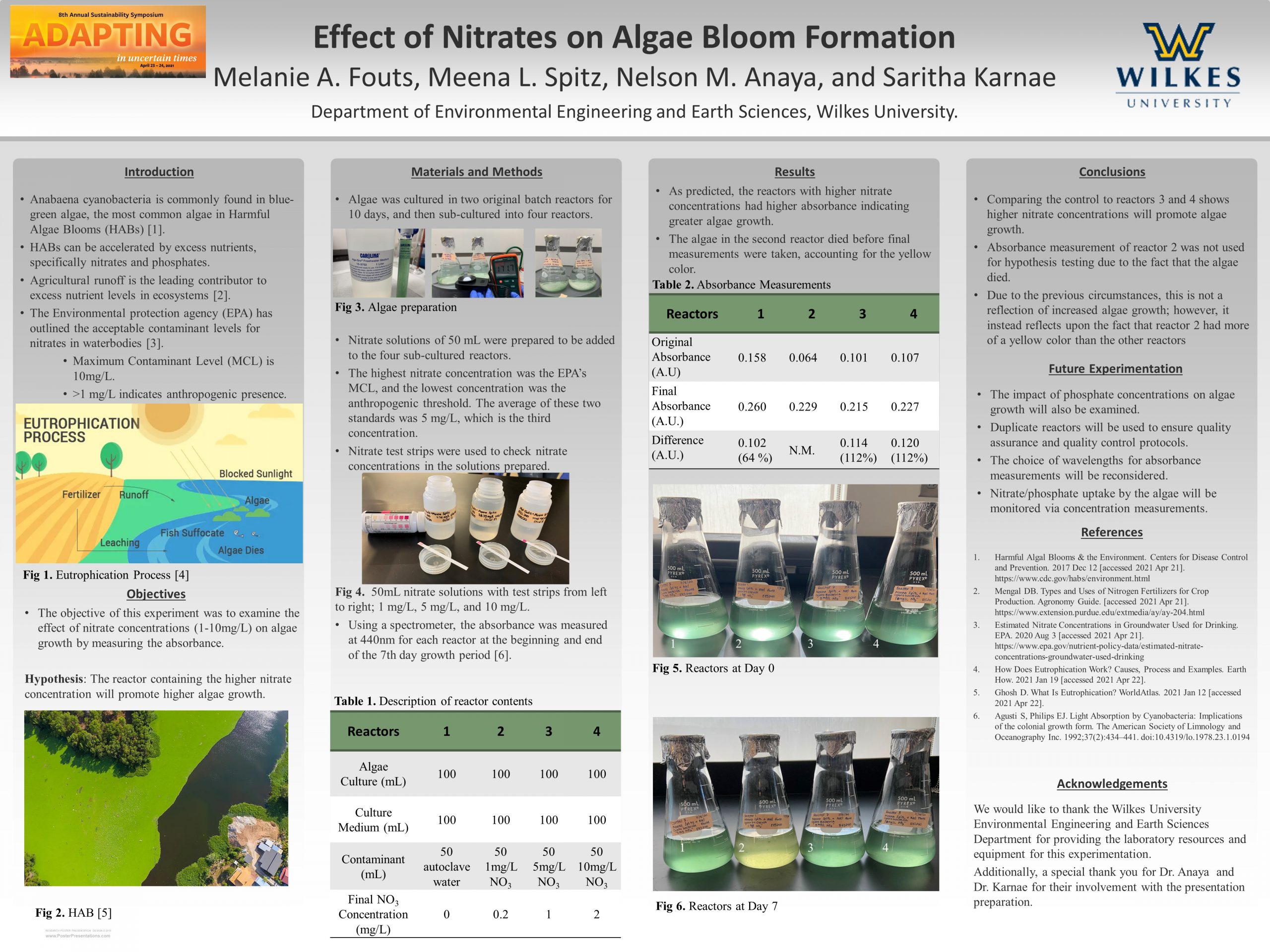Author:
Nelson Anaya-ArchilaCo-Authors:
Melanie A. Fouts, Meena L. Spitz, and Saritha KarnaeInstitution:
Wilkes UniversityAbstract
One of the largest threats to aquatic ecosystems are harmful algae blooms (HABs) which are caused by excess levels of nutrients such as phosphorus and nitrogen. Agricultural runoff is a relevant issue in North East Pennsylvania (NEPA) and a leading source of phosphorus and nitrogen into waterbodies. Excess of nitrates in soils that are not taken up by plants can seep into private drinking water wells. The overabundance of nitrates causes adverse human health effects as well as environmental havoc. Nitrates in drinking water can cause severe health problems for infants and the elderly, as well as minor to moderate problems for younger healthy people. According to the EPA, the lowest unnatural concentration of nitrates in drinking water is 1mg/L, which indicates an anthropogenic presence, and the maximum contaminant level (MCL) is 10mg/L, at which adverse human health effects are known to occur. In order to determine the relationship between algae growth and the presence of nitrates, Anabaena cyanobacteria was exposed to contaminant concentrations of 1 mg/L, 5 mg/L, and 10 mg/L based on the EPA standards. The algae content was measured using a spectrometer. The correlation between absorbance and nitrate concentration was analyzed to determine how algae growth varies with nitrate contamination. Preliminary results showed that an overabundance of nitrates such as 10 mg/L causes excess algae growth, it can be assumed that increased algae growth, absorbency values around 0.227, is indicative of higher nitrate concentrations. Therefore, it follows that increased algae populations implies a risk of nitrate contamination in drinking water.

